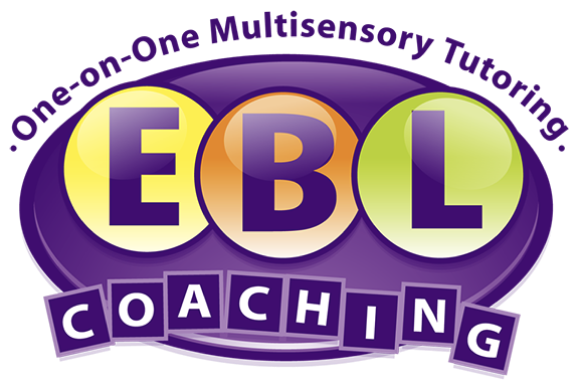
How to Write a Perfect Five Paragraph Essay
By Emily Levy, founder & director of EBL Coaching
Do you find that your child has interesting, smart, and creative ideas but struggles to put them down on paper? Many students are unsure how to begin the writing process, how to write well-organized thesis statements, and how to structure each of their body paragraphs. As the writing demands of school increase, these struggles tend to follow. Yet learning the steps for composing a well-written five paragraph essay can help all students improve their writing. Read more at Help Your Child with Dysgraphia Build Stronger Writing Skills – EBL Coaching.
Here’s how it’s done:
Step 1: The Introduction Paragraph. This paragraph tends to be the most challenging one for students to write. At the start of the essay, the student must lure in the reader with an interesting, thought-provoking remark or anecdote. The paragraph must end with a well-constructed thesis statement to set the organization and tone of the essay. Here are some guidelines for writing a strong introduction paragraph:
1. The Opener. Students can choose one of the following five ways to start the essay:
- Question (Ex. Have you ever wondered how lasagna is made?)
- General Statement. (Ex. Growing trees is an easy process.)
- Quotation. (Ex. A wise man once said, “If it ‘aint broke, don’t fix it.”)
- Opposite Statement (Ex. Many people believe that all water is safe to drink.)
- Story (Ex. The manager left his store to take a quick lunch break. He was sure all of his employees were trustworthy. He was gone for one hour, and when he returned, all of the cash was missing from his register.)
- For practice, encourage your child to write just the opener of several different essays on various topics. These five choices will add variety and creativity to his or her writing!
2. The Thesis Statement. The thesis statement should always come at the end of the introduction paragraph. It should contain two parts: the student’s opinion on the topic and his or her plan for the essay. For example, a well-constructed thesis statement might be as follows: Blue Man Grill is the best restaurant in town because of its food, atmosphere, and friendly staff. Note that for this thesis statement, the opinion is Blue ManGrill is the best restaurant in town and the plan is because of its food, atmosphere, and friendly staff. Thus, the first body paragraph of this essay would be about Blue Man Grill’s food, the second body paragraph would be about its atmosphere, and the third would be about its friendly staff. For practice, have your child write thesis statements on the following topics: winter sports, junk food, and holidays.
3. The Lead-in. The lead-in is composed of 3-5 sentences and should come before the thesis statement and after the opener. We teach the lead-in after teaching the thesis statement, however, because it flows together and is easier to grasp this way. As practice, students should read well-written introduction paragraphs and highlight the opener in one color, the lead-in in another color, and the thesis statement in a third color.
Step 2: The Three Body Paragraphs. The thesis statement sets the plan for the content of each body paragraph. When writing the body paragraph, students should ask themselves: If the thesis statement is: Skiing is a great sport because it is fun, social, and athletic, what would each body paragraph be about? In this case, the first body paragraph would be about why skiing is fun, the second would be about why it is social, and the third would describe why it is an athletic sport.
Each body paragraph should include details, examples, statistics, quotations, and any other specific information. The old adage “Show, don’t tell” certainly applies here. It is important that the student describes information in detail, with concrete backup from credible sources, rather than just “telling” about it. Remember that if any information is taken from other sources, it must be credited as an outside source.
Step 3: The Conclusion Paragraph. This paragraph can be a tough one for many students to write. Students must reiterate all of the information from the essay without being redundant, and add more information without really adding more information. How is this done: The solution for writing the conclusion paragraph is as follows:
- Restate the Thesis Statement. This is where the student should remind the reader of his or her opinion on the topic and restate the three supporting points. For example, for our Rocking Horse Grill essay, we might start our conclusion paragraph with the following: “Because of its delicious Mexican cuisine, convivial ambiance, and energetic staff, Rocking Horse Grill is one of the best restaurants in Chicago.”
- The Lead-out. The next 2-4 sentences should lead the reader to the author’s final, conclusive remark. The student can reiterate some points about each of the body paragraphs. These sentences should, of course, contain words that are different from those used in the actual body paragraphs.
- Concluding Remark. This remark should be conclusive, strong, and perhaps profound. It should leave the reader thinking. For example, a concluding remark for our Rocking Horse Grill essay might be: “The next time you are in town, do not bother with any other restaurants since Rocking Horse Grill has it all.”
If your child follows the above model when writing, he or she will be well on the way toward a perfect five paragraph essay. But first, to your child, a few other pointers:
- Try not to directly state your opinion. Avoid phrases like:
- “In this essay, I will talk about…”
- “I think that smoking is bad for you because” (rather, simply state “Smoking is bad for you because…”)
- “In conclusion, my essay proves…”
- Remember to use transition words when transitioning between paragraphs and between points within paragraphs. For example, at the start of your first body paragraph, you might write, “The first reason why Rocking Horse Grill is the best restaurant in town is because it offers delicious Mexican cuisine.” Between points within that paragraph, you might write, “Next, the burritos at Rocking Horse are some of the best I have ever had. They are warm, thick, and are filled with fresh ingredients. Furthermore, there is a wide variety to choose from.” The words in italics are some transition words you might use.
- Perhaps the most important advice you should follow is to always use three steps when writing: brainstorm, write, and self-check. Use the following guidelines when doing so:
- Brainstorm. Use a visual diagram, a word processor, or even a hand-written list to plan your essay. Make sure you write out your opener, your thesis statement, your three points for your body paragraph, and some details, quotes, statistics, or other specific information that you might include in each body paragraph before writing. This step sets the stage for the organization and flow of your essay.
- Write. Use the above-mentioned guidelines for specific information on how to write the essay itself.
- Self-check. This step is critical; one that many students neglect! When self-checking your work, do not rely solely on the spell check or grammar check on your word processor. Many mistakes are missed by using just these tools! Instead, self-check your work using the following checklist:
- Capitalization: re-read your essay and make sure that all letters that should be capitalized are, and those that should not be capitalized are not.
- Tense: re-read your essay and make sure that all tense is consistent. That means that you should not mix past and present tense together. Rather, you should choose one of the two and stick with it throughout the essay.
- Organization: re-read your essay and ask yourself the following questions: Does my essay have a strong opener? Is that opener followed by a lead-in, and then by a well-constructed thesis statement? Have I clearly stated my points in each body paragraph? Have I restated my thesis statement in my conclusion paragraph and ended my essay with a thought-provoking remark? If so, then check off this box.
- Punctuation: again, re-read your essay and make sure all of your punctuation is correct.
- Spelling: re-read the essay and make sure all spelling is correct.
Note that the key theme here is re-read. You should re-read your essay five times, each time checking for a different element. Read more at Help Your Child Build Stellar Writing Skills – EBL Coaching.
Encouraging your child to follow this step-by-step guide to writing a five paragraph essay can help him structure his thoughts on paper in a well-organized, logically flowing fashion. It may take some time, but the more practice, the more progress you will see – so help him get to work!
Dr. Emily Levy is the Founder and Director of EBL Coaching, which offers one-on-one tutoring and intensive summer programs. For more information, visit www.eblcoaching.com or call 212-249-0147.
Other Related Blogs:
